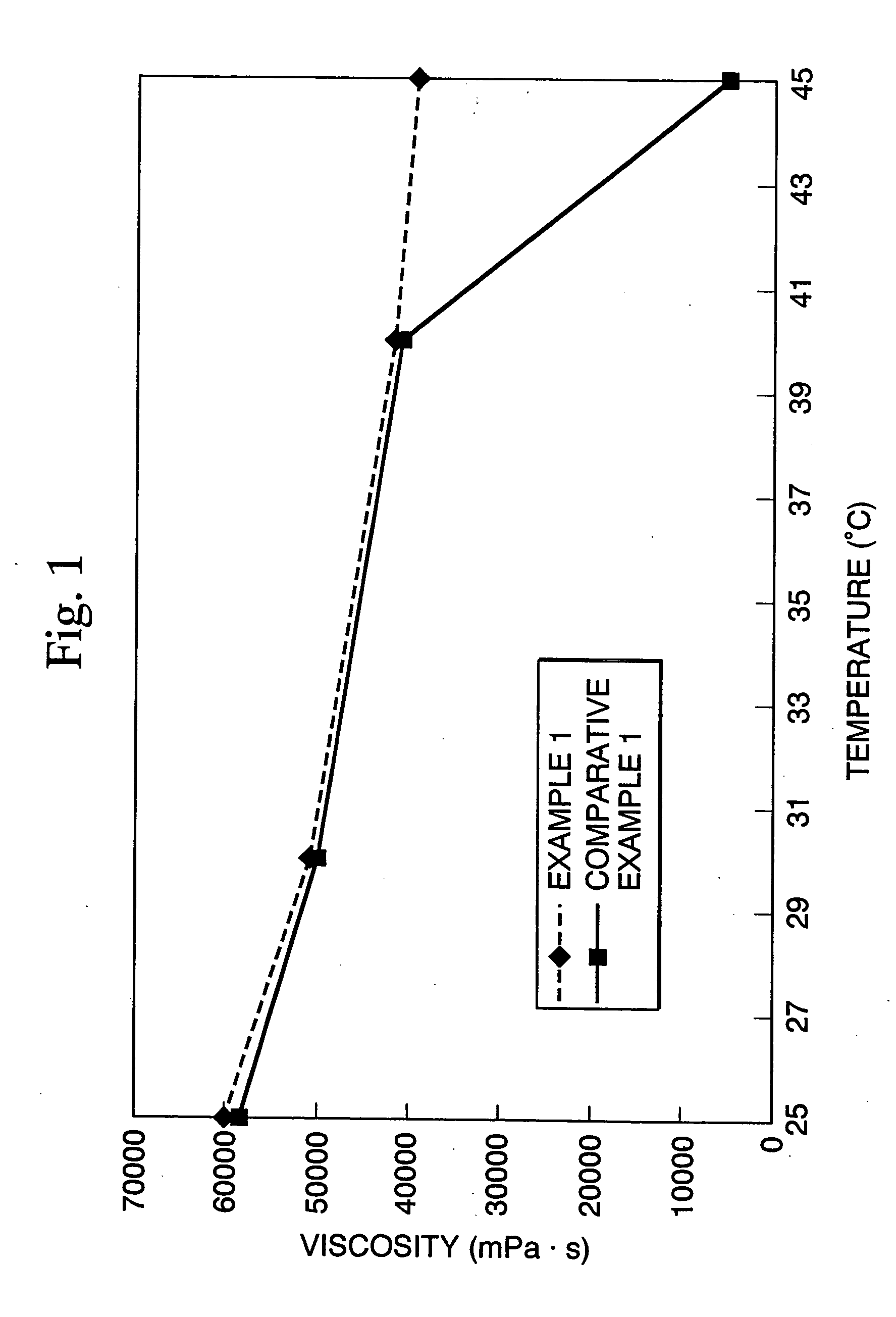Cosmetic emulsion preparation and agent for external use
a technology of emulsifier and emulsifier, which is applied in the direction of dermatological disorders, drug compositions, transportation and packaging, etc., can solve the problems of inability to use as emulsifier, loss of hydrophilic properties of polyglycerol, and limitations of polyglycerol fatty acid ester
- Summary
- Abstract
- Description
- Claims
- Application Information
AI Technical Summary
Benefits of technology
Problems solved by technology
Method used
Image
Examples
production example 1
Polyglycerol
[0075] 3300 g of diglycerol and 800 g of a 50% aqueous sodium hydroxide solution were placed in a 5-liter four-mouth flask and heated to 140.degree. C. while removing the water in the presence of flowing nitrogen. After distillation of the water was completed, 640 g of dichlorohydrin were added dropwise over 2 hours. Following adding dropwise, the mixture was stirred for 2 hours at 120.degree. C. After removing the excess diglycerol by molecular distillation, the mixture was diluted with water, and decolored and desalted with activated charcoal and ion exchange resin followed by removal of water to obtain polyglycerol. When the hydroxyl value of this product was measured and the average degree of polymerization was calculated, it was found to be 10. In addition, when this product was treated with TMS and analyzed according to the aforementioned GC method, the weight percentages were found to be 0% for free glycerol, 2% for the dimer component, 3% for the trimer component...
production example 2
Polyglycerol
[0076] 1000 g of the polyglycerol of Production Example 1 were applied to a pseudo moving bed chromatography system composed of four columns having a degree of crosslinking of 12% filled with 10 ml of calcium cation exchange resin, and then eluted with water. The ratio of the supply and outflow time to the circulation time was set at 2:1. The outflow liquid was separated into polyglycerol having a degree of polymerization of 3 or more while measuring with a refractometer, and then dehydrated and concentrated with a rotary evaporator to obtain polyglycerol. The same procedure was carried out four times using the same column. The resulting polyglycerol had an average degree of polymerization of 11, and its composition consisted of 1% free glycerol, 1% dimer component, 2% trimer component, 6% tetramer component, 58% pentamer component, 18% hexamer component, 4% octamer component, 2% nonamer component, 2% decamer component and 3% undecamer and higher polymer component.
[0077]...
synthesis example 1
Polyglycerol Fatty Acid Ester
[0078] 259.7 g of the polyglycerol obtained in Production Example 1, 88.2 g of stearic acid and 0.1 g of tripotassium phosphate were placed in a 500 ml four-mouth flask and allowed to react at 250.degree. C. while removing the water produced in the presence of flowing nitrogen. After the reaction, 0.3 ml of phosphoric acid were added to obtain polyglycerol stearate. The acid value of this ester was 1.0. The HLB value of the polyglycerol stearate was 13.4.
PUM
| Property | Measurement | Unit |
|---|---|---|
| Fraction | aaaaa | aaaaa |
| Percent by mass | aaaaa | aaaaa |
| Percent by mass | aaaaa | aaaaa |
Abstract
Description
Claims
Application Information
 Login to View More
Login to View More - R&D
- Intellectual Property
- Life Sciences
- Materials
- Tech Scout
- Unparalleled Data Quality
- Higher Quality Content
- 60% Fewer Hallucinations
Browse by: Latest US Patents, China's latest patents, Technical Efficacy Thesaurus, Application Domain, Technology Topic, Popular Technical Reports.
© 2025 PatSnap. All rights reserved.Legal|Privacy policy|Modern Slavery Act Transparency Statement|Sitemap|About US| Contact US: help@patsnap.com

